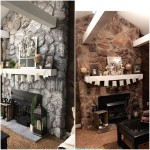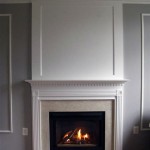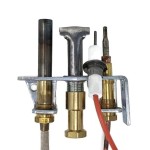Antique Fireplace Grates: A Historical and Functional Overview
Antique fireplace grates represent more than just a functional component of a hearth; they are a tangible link to the past, showcasing craftsmanship and design trends across various eras. Understanding their history, identifying different types, and appreciating their significance adds depth to the enjoyment of these historical artifacts.
Fireplace grates, essentially baskets made of iron or other metals, serve a crucial purpose in optimizing combustion within a fireplace. They elevate the fuel source, typically wood or coal, allowing air to circulate freely from underneath. This improved airflow leads to more efficient burning, generating more heat and reducing smoke output. Beyond functionality, grates also protect the masonry of the fireplace from direct contact with intense heat, prolonging its lifespan.
The use of grates represents a significant advancement in heating technology. Prior to their introduction, fires were often built directly on the hearth floor. Grates provided a cleaner, more controllable, and more efficient means of heating a home. Their evolution reflects changes in architectural styles, fuel types, and decorative preferences throughout history.
The Historical Context of Fireplace Grates
The earliest forms of fireplace grates emerged during the medieval period, primarily in castles and larger homes. These were often simple, utilitarian structures made of heavy wrought iron. Their design focused on practicality rather than aesthetics, serving solely to elevate the fire above the hearth.
During the 17th and 18th centuries, fireplace grates began to evolve, reflecting the growing emphasis on interior design and comfort. As coal became a more prevalent fuel source, grates were often modified to accommodate its smaller size and different burning characteristics. This era saw the introduction of more elaborate designs, incorporating decorative elements and craftsmanship.
The Georgian and Regency periods in England witnessed a particular flourishing of grate design. Skilled ironworkers produced intricate grates featuring elegant curves, classical motifs, and finely detailed castings. These grates were often paired with decorative fire surrounds and fender seats, creating a focal point within the room.
The Victorian era brought about further diversification in grate styles, driven by industrialization and the availability of mass-produced components. While some continued to favor elaborate, ornate designs, others embraced simpler, more functional grates. The use of cast iron became widespread, allowing for intricate patterns and decorative detailing to be produced at a lower cost.
The 20th century saw a decline in the use of traditional fireplace grates as central heating systems became more common. However, antique grates remain highly sought after by collectors and those seeking to restore historical properties or add a touch of period charm to their homes.
Identifying Different Types of Antique Fireplace Grates
Antique fireplace grates can be categorized based on their design, materials, and intended fuel source. Understanding these distinctions aids in identifying and appreciating the historical significance of each grate.
Dog Grates:
These grates are characterized by their raised legs, which elevate the fire significantly above the hearth. They were commonly used in larger fireplaces and were designed to accommodate larger pieces of wood. The term "dog" likely refers to the animal-like appearance of the supporting legs.Basket Grates:
As the name suggests, basket grates feature a basket-like structure that holds the fuel. These were particularly popular for burning coal, as the basket design effectively contained the small pieces of fuel. They often incorporated decorative elements, such as curved bars and intricate castings.Hob Grates:
Hob grates are distinguished by the presence of small platforms, or "hobs," on either side of the grate. These hobs served as a place to keep kettles or cooking pots warm, adding a practical element to the fireplace. Hob grates were often used in kitchens and other rooms where cooking took place.Register Grates:
Register grates incorporate a damper mechanism that allows the user to control the airflow within the fireplace. This made them more efficient and easier to regulate the heat output. Register grates were often used in more formal settings, where precise temperature control was desired.Materials:
The primary materials used in antique fireplace grates are wrought iron and cast iron. Wrought iron grates, typically from earlier periods, are often handcrafted and feature a more organic, less uniform appearance. Cast iron grates, common from the Victorian era onwards, are produced through a casting process, allowing for intricate details and mass production.Factors Influencing the Value of Antique Fireplace Grates
The value of an antique fireplace grate is determined by a number of factors, including its age, condition, rarity, design, and provenance. Understanding these factors helps assess the worth of a particular grate.
Age and Rarity:
Older and rarer grates generally command higher prices. Grates from the 17th and 18th centuries are particularly sought after, as they represent a period of significant craftsmanship and design innovation. Grates made by renowned foundries or designers also tend to be more valuable.Condition:
The condition of the grate is a crucial determinant of its value. Grates in excellent condition, with minimal rust, damage, or repairs, are more desirable. However, some degree of wear and tear is to be expected in antique items, and a perfectly restored grate may not be as valuable as one with its original patina.Design and Craftsmanship:
Grates with elaborate designs, intricate castings, and high-quality craftsmanship tend to be more valuable. The presence of decorative elements, such as classical motifs, floral patterns, or heraldic symbols, can also increase its worth.Provenance:
The provenance, or history of ownership, of a grate can also impact its value. Grates with a documented history, particularly those that were once owned by notable individuals or came from significant historical buildings, are often more prized by collectors.Material and Construction:
Wrought iron grates, due to their handcrafted nature and rarity, are generally more valuable than cast iron grates. The quality of the iron and the skill of the blacksmith also contribute to the overall value.Maintaining the aesthetic and structural integrity of an antique fireplace grate requires careful handling and appropriate cleaning methods. Abrasive cleaners or harsh chemicals should be avoided as they can damage the finish or corrode the metal. Gentle brushing with a soft-bristled brush and occasional waxing can help preserve the grate's appearance and prevent further deterioration.
The enduring appeal of antique fireplace grates lies in their ability to connect us to the past while simultaneously providing a functional and aesthetically pleasing element to our homes. By understanding their history, types, and factors influencing their value, one can appreciate the craftsmanship and artistry embodied in these historical artifacts.
Eclectic Red Barn Antique Fireplace Grate Decorated For

10 Antique Fire Grates For Ingantiques Co

Georgian Style Antique Fire Grate For At 1stdibs Fireplace Grates

Antique Fireplace Log Grate H806 Charles Nijman Antiques

Vintage Cast Iron Fireplace Insert Grate Basket Accessories Home Decor Lovebirds Rustic Lighting Heavy Black Gold Birds Hong Kong

Vintage Fire Grate Tudor Rose Antiques

Impressive Dragon Fireplace Grate Fire At 1stdibs Antique Vintage Grates

Antique Fire Baskets Firegrates Log Westland London

Large Rococo Summer Fireplace Grate Gibilaro Design

Firebacks 500 Charles Nijman Fireplace Antiques
Related Posts








